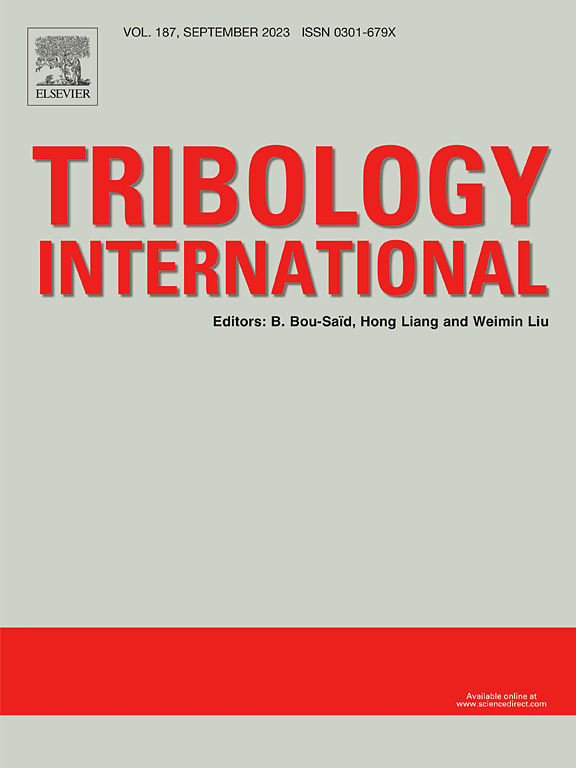Elastohydrodynamic lubrication of aqueous hydroxyethyl cellulose-glycerol lubricants
IF 6.1
1区 工程技术
Q1 ENGINEERING, MECHANICAL
引用次数: 0
Abstract
Continuous growth in lubricant volume worldwide, environmental hazard of fossil-based lubricants and anthropogenic climate change are reflected in an increasing demand for green, sustainable lubrication. In the presented work, the influence of molecular mass of hydroxyethyl celluloses on rheology, elastohydrodynamic friction and film thickness of aqueous lubricants was investigated experimentally. Polyalphaolefin and polyethylene glycol were used as reference lubricants. All lubricants were formulated to have the same dynamic zero-shear viscosity. The average molar mass of commercial hydroxyethyl cellulose was adjusted by enzymatic hydrolysis. 40 to 70 wt% glycerol were added to improve the film formation capability and high-shear viscosity. The results indicate that commercial hydroxyethyl celluloses with weight average molar masses above 88 kg mol-1 are not suitable to increase elastohydrodynamic film thickness due to shear-thinning even at moderate shear rates. Hydrolysis increased the critical shear stress by an order of magnitude to 1.13 × 104 Pa. Compared to the reference lubricants, elastohydrodynamic friction was reduced by more than 90 %. Nevertheless, due to the pronounced shear-thinning behavior, a weight average molar mass of 19 kg mol-1 seems to represent a threshold for relevant lubricant film formation in elastohydrodynamically lubricated contacts. Overall, the results show that the combination of hydroxyethyl cellulose and glycerol is well suited for viscosity modification of aqueous lubricants.
求助全文
约1分钟内获得全文
求助全文
来源期刊

Tribology International
工程技术-工程:机械
CiteScore
10.10
自引率
16.10%
发文量
627
审稿时长
35 days
期刊介绍:
Tribology is the science of rubbing surfaces and contributes to every facet of our everyday life, from live cell friction to engine lubrication and seismology. As such tribology is truly multidisciplinary and this extraordinary breadth of scientific interest is reflected in the scope of Tribology International.
Tribology International seeks to publish original research papers of the highest scientific quality to provide an archival resource for scientists from all backgrounds. Written contributions are invited reporting experimental and modelling studies both in established areas of tribology and emerging fields. Scientific topics include the physics or chemistry of tribo-surfaces, bio-tribology, surface engineering and materials, contact mechanics, nano-tribology, lubricants and hydrodynamic lubrication.
 求助内容:
求助内容: 应助结果提醒方式:
应助结果提醒方式:


